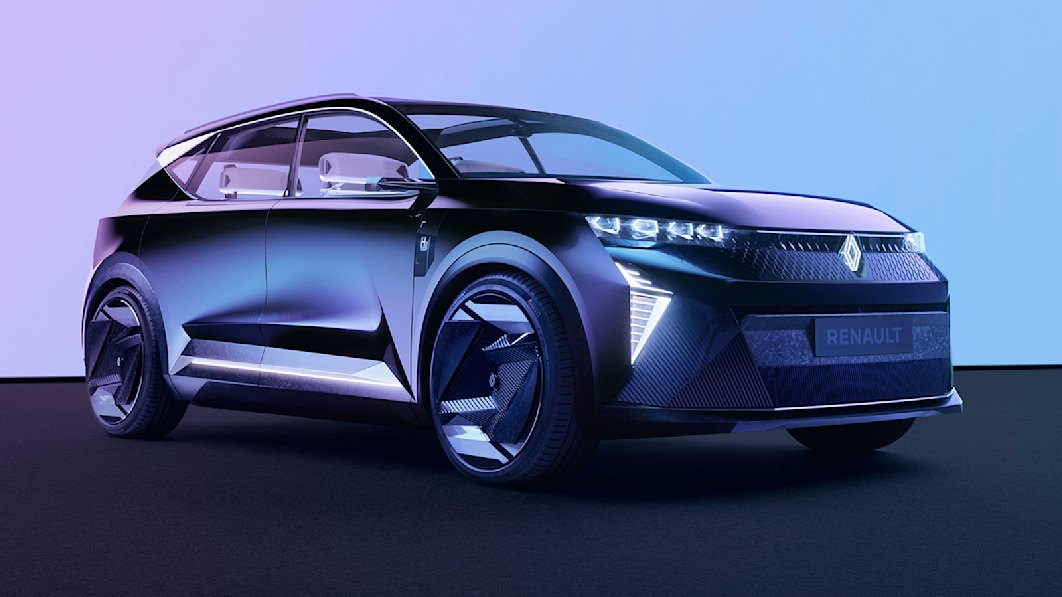Renault Scénic Vision features unique hydrogen plug-in powertrain

Renault has released another concept previewing its greener, electrified future. It’s called the Scénic Vision, and the design seems to borrow a bit from the angular and squared-off design of the Renault 5 Prototype concept. It also previews the design of a 2024 version of the Scénic MPV. But perhaps more interesting than all of that is its plug-in hybrid hydrogen fuel cell powertrain.
Every hydrogen fuel cell car to date is effectively an electric car. It’s just that instead of a battery, it relies on a fuel cell to generate electricity from hydrogen, which is itself stored in a tank. What the Scénic Vision does is add a decent size battery that can be charged from the grid. It’s a 40-kWh battery. Renault didn’t give an estimated range on battery-only, but the base Nissan Leaf has a 40-kWh battery and can go up to 150 miles on a charge, just for reference. But for longer trips and faster fueling, there’s a 2.5-kg hydrogen tank on board with a 16-kW fuel cell for producing additional electricity. The idea is that this allows for the use of a smaller battery that weighs less and uses less material and energy in production, while also maintaining long-distance flexibility on relatively green fuel. And in fact, with hydrogen in the mix, Renault claims a range of 497 miles (probably a bit less on EPA testing).
As for how all this is laid out, the battery and the fuel cell are placed in the floor of the car. The hydrogen tank sits in the front, and the motor is in the rear, powering the rear wheels. It also happens to make 160 kW of power, or 215 horsepower.
Renault also touts the use of recycled materials in the Scénic Vision. It says that 70% of the car’s materials are from recycled goods, whether that’s the steel in the chassis, the aluminum and even the carbon fiber that goes into the side sills and hydrogen fuel tank. The company also says that 95% of the finished car can then be recycled later. Furthermore, there are plans for the batteries to be used for other, stationary purposes after they become unusable for the car.
It’s not all about environmental benefits, though. Renault also focused on safety and technology, particularly for the interior. One large screen in the cowl is augmented by many customizable “widget” screens that each have their own functions. The on-board facial recognition system, which unlocks the car, can also adjust all these screens and other parts of the interior for optimal reach and visibility for the driver. Other sensors keep track of the driver’s driving style and can advise on how to drive more safely and more efficiently, plus it can warn of upcoming obstacles and hazards. It also will monitor the driver’s health and awareness and do what it can to keep the driver alert. And if the driver is unresponsive, the car can bring itself to a stop.
Whether all this technology will show up in the production 2024 Scénic is unclear. The powertrain seems fairly plausible, but some of the more fanciful interior design seems a bit farfetched. At the very least, the design is handsome. We’ll be curious to see the final product, even if it won’t appear on American shores.
Related video:



